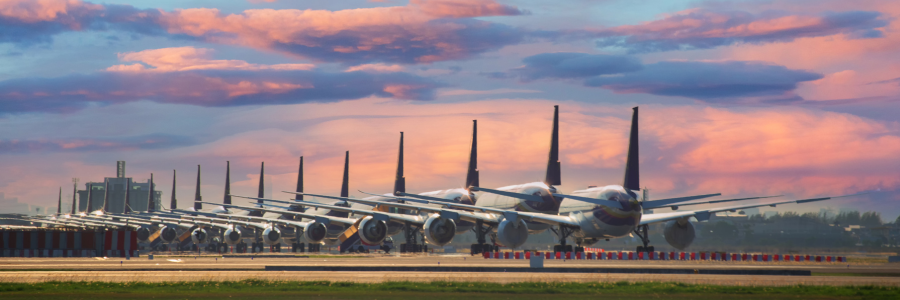Air cargo volume growth will be halved in 2025, but it will still be a good year for carriers due to continued ocean shipping delays, tight freighter capacity and strength in cross-border e-commerce, as reported in the International Air Transport Association (IATA) forecast.
Cargo volumes are expected to reach 80 million tons, a 5.8% increase from 2024, the trade association said. Cargo demand this year has grown year over year between 10% and 13%, depending on whether it is measured by traffic (cargo ton kilometers) or tons, with the consensus growth rate at 12%. Volumes during the third quarter were second only to the fourth quarter of 2021, when the coronavirus pandemic supercharged airfreight shipping.
The growth projection closely aligns with recent predictions by other market watchers. Freight rate benchmarking and market analytics platform, Xeneta recently said air cargo demand will grow 4% to 6% next year, while capacity increases in the 4% to 5% range.
Our Current State
The current fourth quarter is on track for a record high. The only reason it doesn’t appear as a normal peak season leading to holiday shopping events is that volumes have been strong all year, without any seasonal ebbs. In other words, demand this quarter could reach levels not seen since the pandemic-fueled boom in 2021 but sequentially since the summer upward activity has been less pronounced.
Industry analysts say pricing has remained rational in the face of heavy demand because businesses have been proactive about moving shipments ahead of the usual crunch time and executing short-term contracts for guaranteed space instead of booking on demand.
IATA forecast that air cargo traffic, a measure of combined weight and distance flown, for the full 2024 will grow 11.8% and flirt with the all-time high.
Outlook for 2025
IATA’s outlook calls for member passenger and cargo airlines to achieve cargo revenue of $157 billion in 2025, up 5.4% from the current year. At that level, cargo will represent 15.6% of airlines’ total revenues compared to 12% in 2019. It said average yields should remain stable at 30% above pre-pandemic levels.
During the coronavirus pandemic, freighters became the dominant form of air cargo as passenger aircraft were largely sidelined. The ratio of freighter to belly traffic has since normalized to about 55/45 with the full recovery of global air travel, but demand for dedicated wide-body freighters exceeds capacity as factory-built and converted freighters face production delays.
Most of the imbalance is in the trans-Pacific trade lane where the share of dedicated freighter capacity (89%) is higher today than at the height of the pandemic and belly capacity between the U.S. and China is still low because of diplomatic disputes. As lower-deck capacity moves away from China, all-cargo airlines have moved assets from other regions to the Asia-Pacific and the center of e-commerce activity.
The Role of E-Commerce
Direct-to-consumer e-commerce shipments have been the primary driver of air cargo growth in recent years, with muted growth in other commodities. Experts attribute more than 50% of air cargo volumes out of Asia this year to e-commerce. The influx of large online marketplaces, executing direct-to-consumer fulfillment strategies from China, has elbowed out more traditional freight like apparel, electronics and automotive parts, and influenced the upward move in yields. The traditional B2B airfreight market is likely to rebound next year, supported by demand for semiconductors to power AI, advanced computer processing and electric vehicles, freight data provider Xeneta predicts in its 2025 air cargo outlook.
Global Influences
Global yields in October were about 50% higher than in 2019 and up 11% year over year, primarily because of rates on westbound routes out of Asia and the Middle East to Europe and the Americas. The strengthening of average rates led IATA to forecast a smaller-than-expected decline of -3.5% for 2024 and flat yields for 2025 – but still one-third above pre-pandemic levels.
The air logistics sector has also benefited from businesses pivoting to air transport because of attacks pushing container vessels away from the Suez Canal and around Africa. Red Sea diversions continue to result in delays and are putting upward pressure on ocean rates on key trade corridors, with global spot prices up 200% year over year. Escalation in ocean rates has narrowed the price gap with airfreight, which is now only five times more expensive than ocean shipping versus 10 to 15 times more expensive historically.
Meanwhile, aircraft cargo capacity continues to grow but at a slower pace than demand. With China fully reopening borders and passenger airlines resuming full international schedules, aircraft cargo capacity will end the year up 9.6% from 2023. Next year, capacity growth will decelerate to 6.4%, IATA said. The way the forecasts stack up suggests there could be more capacity entering the market than demand, which could put downward pressure on rates.
The overall economy remains favorable for air cargo, with the World Trade Organization predicting merchandise trade growth of 3% (on par with GDP) in 2025, up from 2.7% this year. But the growth trend could be impacted by several gathering storm clouds.
U.S. President-elect Donald Trump has already threatened widespread tariffs, which is likely to trigger retaliation from other countries. A trade war will be inflationary and dampen consumer spending, economists say. Meanwhile, an increased regulatory focus on import security and duty-free e-commerce shipments could also act as a drag on international air shipping.
Factors to Consider
Industry stakeholders will be watching how airfreight demand responds if ocean shipping rates drop back to pre-pandemic levels, especially if the Red Sea conflict is resolved, or if e-commerce respond to regulatory pressure by moving to a hybrid model based on a mix of direct fulfillment by air and pre-stocking forward warehouses in the U.S. and other markets.
Conversely, the air logistics sector could see a spike in shipments to the United States if a threatened strike by dockworkers shuts down U.S. East Coast and Gulf Coast ports, forcing businesses to make alternative import/export plans for high-value goods and critical industrial components.
For more information and to read this report in it's entirety, click here.
Source: Eric Kulisch, Freight Waves, https://www.freightwaves.com/news/growth-in-air-cargo-demand-to-decelerate-in-2025-iata-says














.png)
